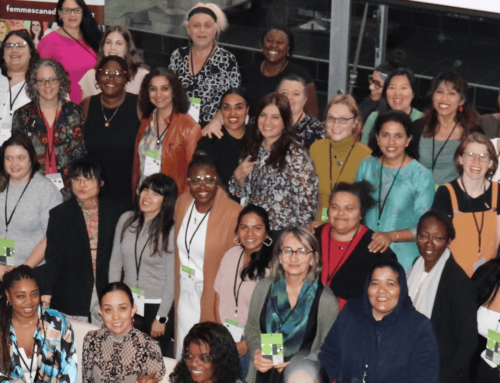In the thick of the COVID-19 pandemic, it’s easy to feel that closing the gender pay gap is not so pressing. But it’s more important than ever.
Equal Pay Day in Canada falls on April 4 this year. It calls attention to the fact that women work about three months into the year “for free” to earn what men earn in a year. In 2018, female employees aged 25 to 54 earned $4.13 or 13.3% less per hour, on average, than their male counterparts. In other words, women earned an average of $0.87 for every dollar earned by men. This number is calculated by comparing the average hourly pay of full-time working women to that of men.
Some women face a bigger gap, depending on the mix of discriminations they face. Research shows that the pay gap is worse for racialized women, Indigenous women, women with disabilities, and newcomer women.
And that average number of 87 cents doesn’t capture the patchy reality of women’s work that makes the pay gap so difficult in lived experience. As the Ontario Equal Pay Coalition says, women are often underemployed, making up the majority of part-time, part-year workers and dominating minimum wage jobs. They’re unpaid for home and caregiving work, of which they do the majority without supports like affordable childcare. They tend to be segregated into “feminized” labour sectors where there’s lower pay and less access to union protections and processes like collective bargaining.
The gender pay gap is closing, but it’s happening at a glacial pace. If we don’t do anything to push it along faster, it’ll take 164 years to close.
The COVID-19 pandemic has unique gendered impacts on women. It could lead to more unpaid caregiving work, economic stress, and gender-based violence, and at the same time, lesser access to relevant services. The pandemic may also act to worsen the gender pay gap as finding and keeping good employment becomes harder. At the least, it could reduce willingness to enforce measures meant to close the gap, as is happening in the UK right now.
We explore how COVID-19 has impacted women in the workforce on our new podcast. Listen on Spotify or here.
This is a problem because all the evidence demonstrates that when women do well, everyone does well. Our recovery from the COVID-19 crisis, our capacity to weather the storm and get healthy again, really does hinge on the well-being of women. When we pull away our efforts to build gender equity, we only end up hurting ourselves.
That’s why we launched the Tireless Together Fund in response to the COVID-19 crisis. We know we can’t let up now. We must deal with the gendered impacts of the crisis to be able to recover, as families, communities, regions, and a country at large. If you can contribute, please donate now online. Every dollar counts and will make a difference.
On April 4th: join the Ontario Equal Pay Coalition’s Virtual Rally at 1:00 PM EST. As the coalition says, “Without women’s work, the economy doesn’t work. Women are dominating jobs on the front line of the COVID-19 pandemic – nursing, care work, cleaning, food services, retail and more.”
Learn more:
The Facts about the Gender Pay Gap in Canada
Three Bold Steps Toward Closing the Gender Pay Gap
The Motherhood Penalty
How Wrap-Around Supports Can Help Close the Gap







